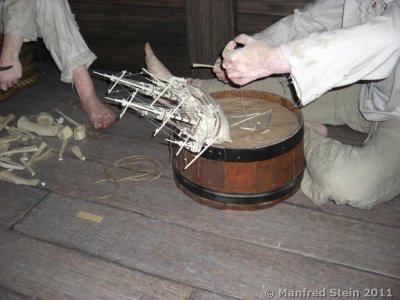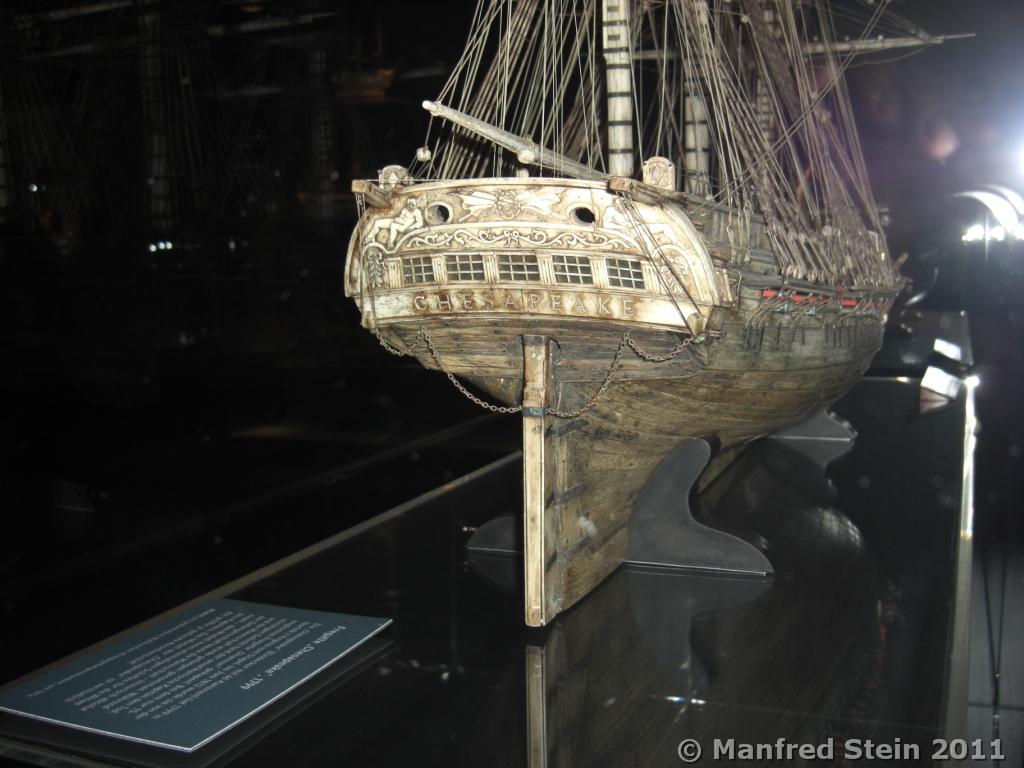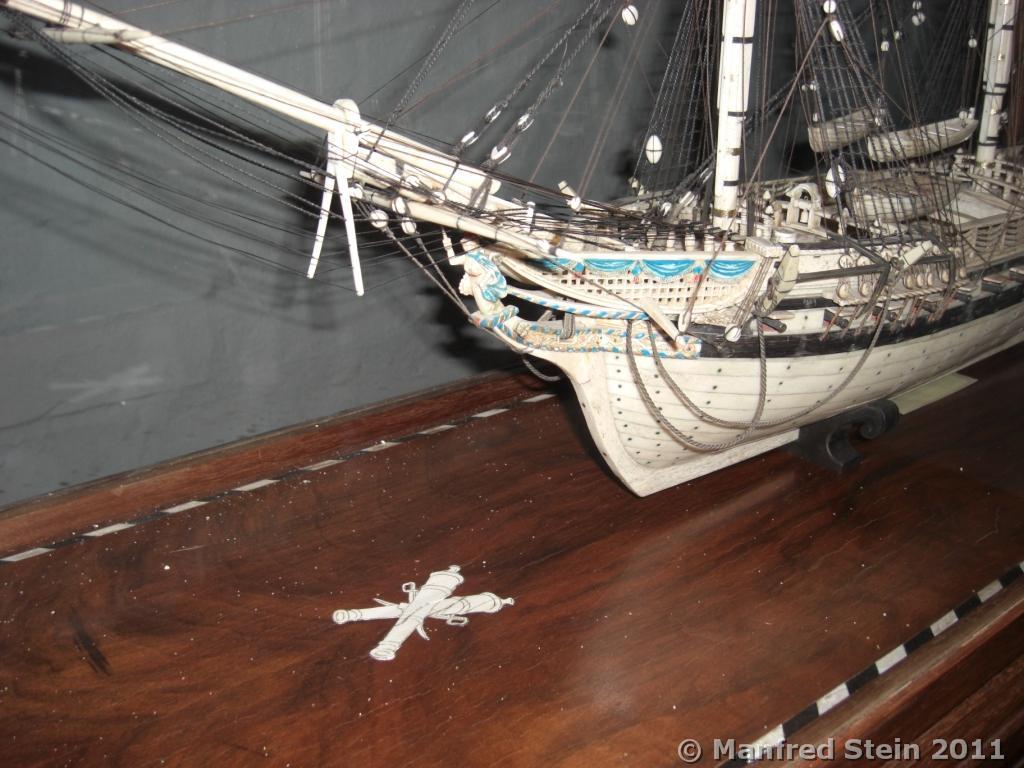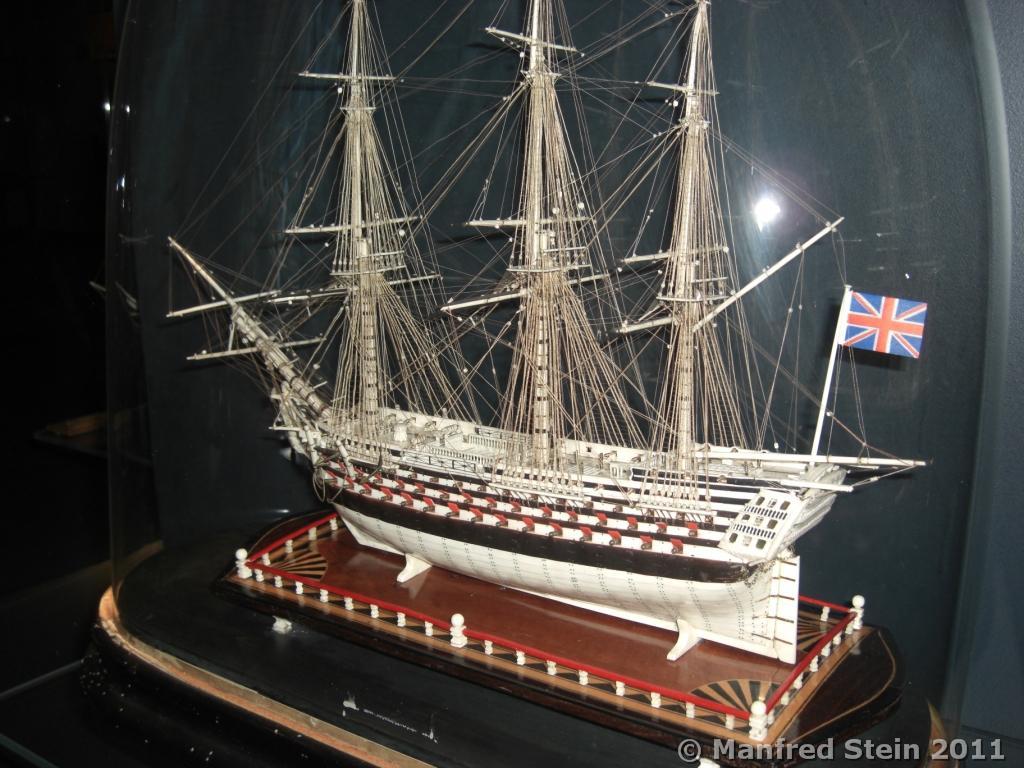Manfred Stein, Hamburg
Fig. 1 Presentation of prisoners of war in a hulk building a model bone shipThe majority of bone ship models are located in England, the country where the artists of classicism created these wonderful works of art while in confinement (Figs. 1 and 2).
The collection of prisoner of war bone ship models in the International Maritime Museum, Hamburg (IMMH) is a very impressive fleet compared with other museums in the world and the largest collection of bone ships displayed in a museum anywhere in the world.
The bone ship model collection of Peter Tamm that has grown over decades is outstanding for its diversity. It ranges from smaller models such as one 16.5 cm in length to the 144 cm long US Frigate CHESAPEAKE (Fig. 3).



When we examine some models more closely, we notice right- and left-handed rigging. We will realize that the rigging of some models is historically correct: the standing rigging (shrouds, stays) is left-handed, while the running rigging (jeers, backstays) is right-handed.

If we look carefully, we recognize that the figurehead of the wonderfully built and decorated LA SIRENE represents an antique female warrior (Fig. 4).
Surprisingly, one of the most beautiful and exceptionally accurately built bone ship models of the Peter Tamm collection reveals stylistic similarity to HMS VICTORY in her original form of 1765. It is the 1th rate warship with three gun decks in display case g (Fig. 5). I dare say that thanks to the cover of the bell jar, we are able to see even today this bone ship model in its bright white and we can study in detail the original rigging plaited and hand-laid of human hair.

Her “sister ship”, the finest bone ship model of HMS VICTORY, is today in the United States Naval Academy Museum in Annapolis, Maryland.
In presenting individual bone ship models from the exhibition in a book, my main aim was to analyse stylistic elements reflecting predominantly the style of art at the time of their origin, classicism. I trust that this book will show the reader the beauty of the models which I have selected as the best examples of the Peter Tamm collection. We may share in the delight and satisfaction experienced by those creating these artistic masterpieces more than 200 years ago.
It was for them a way of giving a structure to the everyday grind of imprisonment. By working on a bone ship model, the modeller or his group was able to earn some good money and brighten up a dismal life with an extra ration of tobacco or tea or some new workshop tools.
All pictures by the author. The bibliographic reference to his book about the bone ships is:
Stein, Manfred 2015. PRISONER OF WAR BONE SHIP MODELS – Treasures from the age of the Napoleonic Wars, Hamburg, Koehler, ISBN 978-3-7822-1205-2
Check out the extensive website of the author for more info: www.pow-boneships.de
